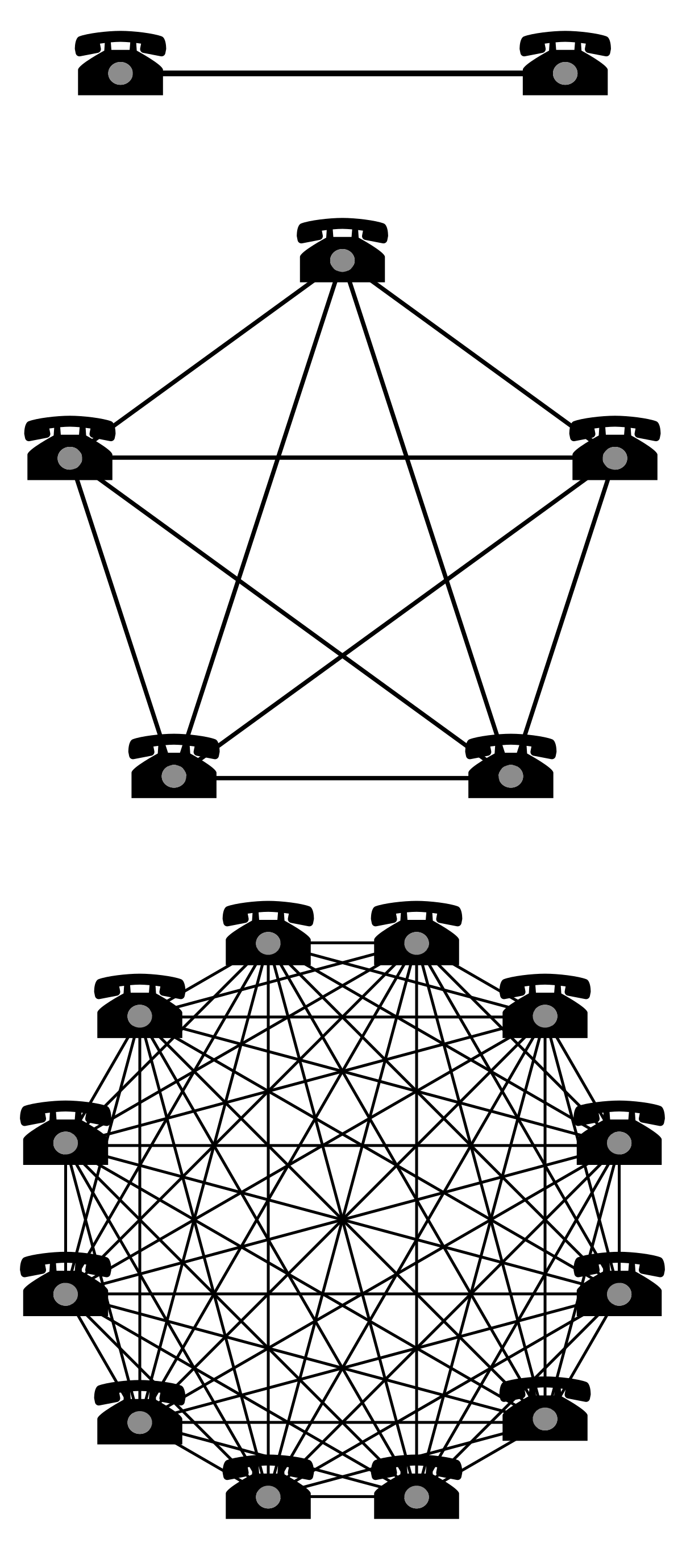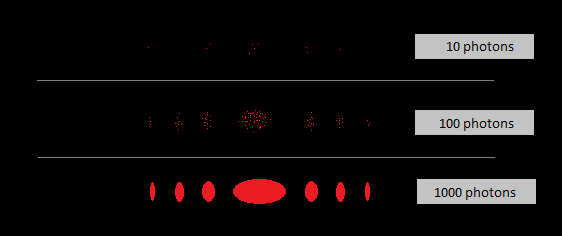One of the great benefits of electricity is that it gives us a convenient way to distribute kinetic energy from one location to another.
A waterfall in a remote location can thus be used to power an electric train in some other remote location. All that is required is a generator at the waterfall and an electric motor in the train, connected to each other by a copper wire suspended above the railway.
Once the connection is made from the generator to the train's motor, kinetic energy from the waterfall is transported to the motor in the train.
Generator and Motor
To understand how this works, consider the above illustration.
The brown line represents Earth, and the two circles with magnets inside of them represent the generator and the motor respectively. The live wire is pink, and there is a switch to connect and disconnect the motor.
To make a good generator, copper wire is wound carefully around the generator, but for simplicity, we omit this aspect from our illustration.
The magnet in the generator is spinning. One moment the north pole is inducing current. The other moment, the south pole is inducing current. When the north pole whizzes past the copper wire, electrons are pushed one way. When the south pole whizzes past the copper wire, electrons are pushed the other way. This is explained in the chapters on Ampere's right hand grip rule and induction of current in wires.
The result of a magnet whizzing past a wire in this fashion is an alternating current. However, as long as the switch leading down to the motor is in the off position, no net current is produced. All that is happening is that the capacitance of the live wire is filled and drained with electrons taken from and given back to Earth. There is an alternating electric potential, but no drain.
To keep this state, very little energy is required. There is the friction in the generator, and there is a little bit of loss to the environment from the live wire in the form of low frequency radio waves.
The electrons moving back and forth between capacitance and Earth, produce radio waves in the manner described in the chapter on radio transmission. This is energy lost to the environment. It is an undesired side-effect of AC power distribution, and the reason why people don't like to live close to power lines. The idea of constant radiation from power lines is not a very appealing one.
However, this is beside the point. What we want to understand is how the kinetic energy gets from the waterfall and into the copper wire. Electrons have inertia. Energy is therefore required to set them moving. But the copper wire is separated from the spinning magnet by a small air gap. How does the kinetic energy make the jump from the spinning magnet and into the wire?
The answer to this is of course magnetism.
Inside the copper wire, there are electrons moving about, each with their associated magnetic field.
As we know from playing with stick magnets, magnets line up in an attracting manner when free to move.
The magnetic fields of the magnets will therefore align in an attracting manner relative to the rotating magnet of the generator. An attracting field develops between the magnet and the electrons. The rotating magnet gets in this way a grip on the electrons inside the copper wire.
Since all the electrons in the copper wire are separated from each other by a mutually repelling electric field, moving the electrons in the copper wire at one point, causes all the electrons in the copper wire to move.
The generator has in other words a grip an all the electrons in the copper wire, which it sends one way as the north pole sweeps by the wire and another way as the south pole sweeps by.
Once the electrons are in motion and oscillating between Earth and the capacitance of the wire, no more energy is required before the motor is engaged. We have electric potential, but no drain.
Once we close the switch, and engage the electric motor, current is suddenly free to flow from the overhead live wire to Earth. The initial drain is enormous as there is virtually no resistance. However, as soon as the motor starts rotating, a resistance builds up.
To avoid a complete melt down of the motor and associated circuit, it is important that the motor is spinning. This is why large electric motors are phased in slowly. It is also the reason why electric motors can catch fire and melt if the rotating magnet is stopped.
To understand why this is the case, all we have to note is the similarity in design of a generator and an electric motor. In principle, they are identical.
This means that the magnet in an electric motor, once it starts spinning, connects up to the electrons of the copper wire in the same way as the generator. There is magnetic attraction between the moving electrons and the magnet.
This attraction is at its strongest when the magnet in the motor rotates in perfect harmony with the oscillating electrons in the wire. This happens when there is no load on the motor.
Note that it is in this idle state that the motor produces the biggest resistance in the copper wire. The rotating magnet of the motor is in other words producing resistance in the wire. When the motor is spinning freely in the idle position, very little current is drawn.
To understand how this can be the case, we have to keep in mind what happens if there is a change to the current flowing.
If more current was to flow, a stronger magnetic field would develop, slowing the current down. If less current was to flow, the magnetic field would lessen, weakening the connection to the magnet. The effect of this would be a freer electric flow.
Scaled correctly relative to the inherent resistance in the copper wire, it is possible to make a motor that produces near perfect resistance in the system when rotating in the idle position.
Once we understand that the motor produces resistance in the copper wire, it is also clear why an increased load on the motor will result in an increased load on the generator.
A motor that experiences an increased load slows down. As a consequence, the resistance in the copper wire is reduced. With less resistance in the wire, the generator speeds up. More energy is moved from the waterfall and into the wire. This energy is in turn transferred to the motor.
The whole system balances perfectly, and is in fact self regulating. An electric motor with no load, spins at its maximum, yielding maximum resistance to the circuit. With an increased load, there is less resistance, and the generator speeds up, pumping more kinetic energy from the waterfall into the circuit.
This self regulating effect of magnets and electric currents countering each other is sometimes illustrated by dropping a magnet down a metal pipe. Any metal will do to illustrate this point. As long as the pipe is an electric conductor the effect can be clearly seen. The magnet dropped into the metal pipe slows down significantly.
As the magnet falls, current is induced into the walls of the metal pipe. The current spins around the pipe, so there is no net electric current noticeable anywhere. However, the spinning current produces a magnetic field that pulls on the magnet, and this causes the magnet to slow down.
As a final aside, it is interesting to note that the fact that generators and motors are virtually identical can be used to generate electricity from railroad transportation.
To slow down an electric train, the electric motor can be turned into a generator. The kinetic energy of the train can thus be turned into electric energy.
In this way, trains bringing iron ore down from Sweden to the Norwegian port of Narvik are net generators of electricity. The trains, fully loaded with iron ore, coming down from Sweden, function as generators as they constantly have to break their speed. The empty trains going back to Sweden use this electricity for their power, and the surplus is fed into the grid. The Sweden-Narvik train line is in this way a generator of electricity for the local grid.



















